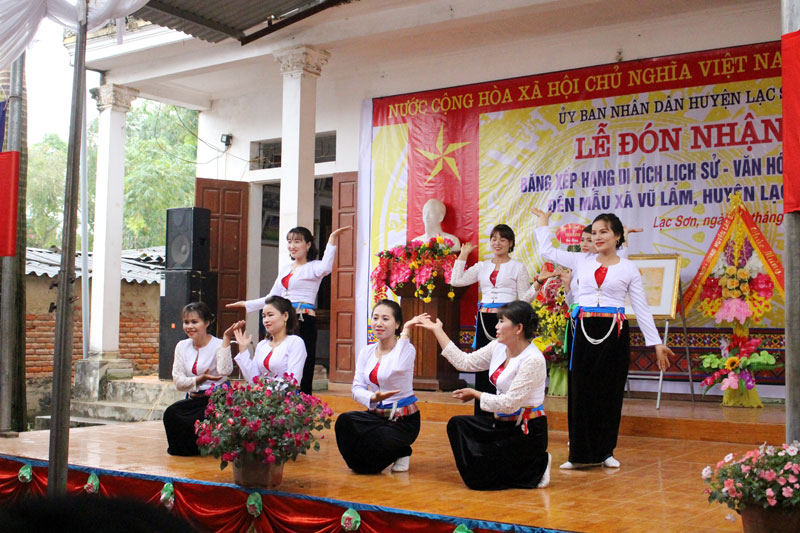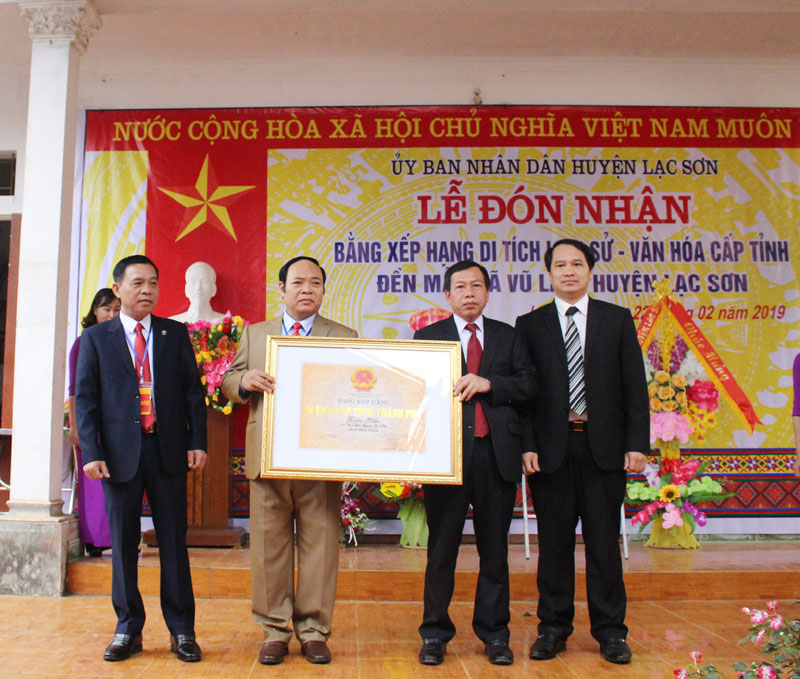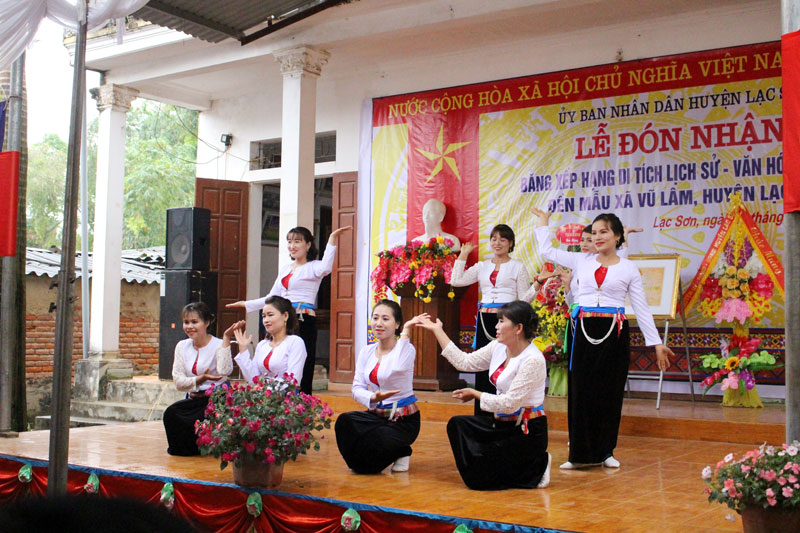
(HBO) – A ceremony was held on February 22 to receive a certificate acknowledging Mau (Mother Goddesses) temple in Vu Lam commune (Lac Son district) of the northwestern mountainous province of Hoa Binh as a provincial historical, culture relic.

Vice Director of
provincial Department of Culture, Sports and Tourism Bui Xuan Truong presents
the certificate recognising Mau temple as provincial historical, culture relic
to leaders of Vu Lam commune (Lac Son district).
The temple is located on
Lam Hoa 1 street in Vu Lam commune (Lac Son district). It was built in 1920 in
an area of about 30 sq.m. by local people, with one room and four pillars of simple
ancient architecture, along with a thatch roof and wooden walls. An altar
honouring three Mother Goddesses was placed inside the temple.
In 1922, residents of the
street donated money to improve the temple in a larger area of 100 sq.m.
The Mau temple festival of
the Muong ethnic people is celebrated on the third day of the third lunar
month, the tenth day of the six month and the twentieth day of the ninth month.
Ever since its establishment, the temple has been a centre for cultural and
communal activities where people pray for the country’s peace, fair weather and
happiness.

An art performance of the
art troupe in Vu Lam commune (Lac Son district).
To conserve and develop
traditional cultural values, on June 22, 2018, the Hoa Binh People’s Committee
issued a decision on recognising the temple as a provincial historical and
cultural relic. This is an encouragement for the authorities and people in Vu
Lam in particular and Lac Son district in general to be more determined to
enhance the values of the relic, drawing more tourists to the temple and
contributing to the culture conservation and development in Lac Son./.
With an increasingly vibrant and widespread emulation movement aimed at building cultured residential areas and cultured families, Yen Thuy District has been making steady progress toward improving both the material and spiritual well-being of its people, while fostering a civilized, prosperous, beautiful, and progressive community.
Once lacking recreational spaces and community facilities, Residential Group 2 in Quynh Lam Ward (Hoa Binh City) has recently received attention for the construction of a new, spacious, and fully equipped cultural house. The project followed the model of state support combined with public contributions in both labor and funding.
The "All people unite to build cultural life" movement, which has been effectively integrated with Kim Boi district’s socio-economic development goals, is fostering a lively spirit of emulation across local residential areas, hamlets, villages, public agencies, and enterprises. In addition, through the initiative, traditional cultural values are being preserved and promoted, while community solidarity and mutual support in poverty reduction and economic development are being strengthened.
A working delegation of the Hoa Binh provincial People’s Committee led by its Permanent Vice Chairman Nguyen Van Toan on June 11 inspected the progress of a project to build the Mo Muong Cultural Heritage Conservation Space linked to tourism services in Hop Phong commune, Cao Phong district.
Born and growing in the heroic land of Muong Dong, Dinh Thi Kieu Dung, a resident in Bo town of Kim Boi district, in her childhood was nurtured by the sweet lullabies of her grandmother and mother. These melodies deeply imprinted on her soul, becoming an inseparable part of her love for her ethnic group's culture. For over 20 years, this love for her hometown has driven Dung to research, collect, and pass down the cultural values of the Muong people to future generations.
In the final days of May, the Ethnic Art Troupe of Hoa Binh Province organized performances to serve the people in remote, mountainous, and particularly disadvantaged areas within the province. These were not just ordinary artistic shows, but they were the meaningful journeys aimed at spreading cultural values, enhancing the spiritual life of the people and contributing to the preservation of ethnic minority cultural identities.




